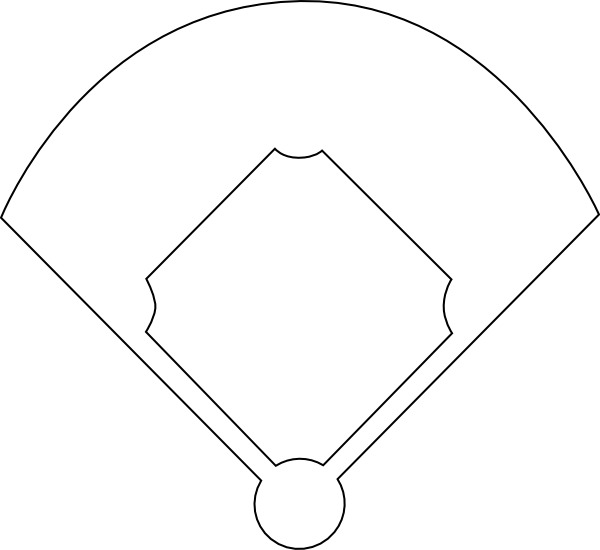As we look to the future of baseball, it’s important to understand the fundamentals of the game. One key aspect is the field itself, and with the help of this printable diagram from Cliparts.co, we can better visualize the layout.
The Baseball Field Diagram
 The baseball field is divided into two main parts: the infield and outfield. The infield is where most of the action takes place, with the pitcher’s mound, home plate, and bases all located within this area. The outfield, on the other hand, is the larger expanse of grass that surrounds the infield.
The baseball field is divided into two main parts: the infield and outfield. The infield is where most of the action takes place, with the pitcher’s mound, home plate, and bases all located within this area. The outfield, on the other hand, is the larger expanse of grass that surrounds the infield.
The Pitcher’s Mound
 The pitcher’s mound is located in the center of the infield and is where the pitcher stands to throw the ball. This raised area is 10 inches higher than the rest of the field and 60 feet, 6 inches from home plate. It’s important for pitchers to have good footing on the mound, as this helps them generate more power and accuracy in their throws.
The pitcher’s mound is located in the center of the infield and is where the pitcher stands to throw the ball. This raised area is 10 inches higher than the rest of the field and 60 feet, 6 inches from home plate. It’s important for pitchers to have good footing on the mound, as this helps them generate more power and accuracy in their throws.
Home Plate
 Home plate is where the batter stands to hit the ball. It’s a pentagon-shaped plate that’s 17 inches wide and 8.5 inches long on each side. The back point of home plate is in line with the pitcher’s mound, meaning the pitcher must throw the ball over this plate to record a strike. If the batter hits the ball within the boundaries of the field, they’ll then run and touch each of the bases in order before reaching home plate and scoring a run for their team.
Home plate is where the batter stands to hit the ball. It’s a pentagon-shaped plate that’s 17 inches wide and 8.5 inches long on each side. The back point of home plate is in line with the pitcher’s mound, meaning the pitcher must throw the ball over this plate to record a strike. If the batter hits the ball within the boundaries of the field, they’ll then run and touch each of the bases in order before reaching home plate and scoring a run for their team.
The Bases
 There are four bases in baseball, all located within the infield. First base, second base, and third base are all 90 feet apart, while home plate is at the center of these three bases. The bases themselves are white squares that are 15 inches on each side. Runners must touch each base in order as they make their way around the diamond – if a fielder tags them with the ball or a base is unoccupied, they’ll be considered out.
There are four bases in baseball, all located within the infield. First base, second base, and third base are all 90 feet apart, while home plate is at the center of these three bases. The bases themselves are white squares that are 15 inches on each side. Runners must touch each base in order as they make their way around the diamond – if a fielder tags them with the ball or a base is unoccupied, they’ll be considered out.
The Outfield
 The outfield is the large expanse of grass that surrounds the infield. It’s where outfielders play, waiting for fly balls hit by the batters. Outfield dimensions vary depending on the specific stadium, but there are some general guidelines for their size. The distance from home plate to the outfield wall varies, but most stadiums have a distance of around 400 feet in center field.
The outfield is the large expanse of grass that surrounds the infield. It’s where outfielders play, waiting for fly balls hit by the batters. Outfield dimensions vary depending on the specific stadium, but there are some general guidelines for their size. The distance from home plate to the outfield wall varies, but most stadiums have a distance of around 400 feet in center field.
As we can see from this printable baseball field diagram, there are many intricacies to the game of baseball. Understanding the layout of the field and how each component fits together is key to appreciating the sport and its rules. Whether you’re a seasoned player or simply a fan of the game, this diagram is an essential tool for understanding the fundamentals of baseball.